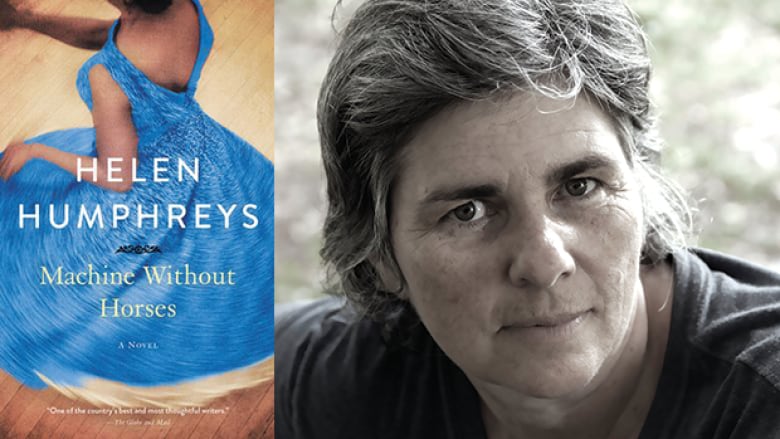
by Sandra Gulland | Nov 20, 2018 | Adventures of a Writing Life, Biographical Fiction, On Character Development, Recommended Books, Movies, Podcasts, etc., The Writing Process |
The two reviews I read of Helen Humphreys newest publication, Machine Without Horses, were somewhat negative, claiming that the combination of memoir and fiction simply do not work. Humphreys is one of my favorite writers. She never fails to please, and so I was curious.
I’ve just now finished it and I beg to differ. I found this to be an innovative and inspiring work.
Machine Without Horses is billed as a novel: therein, I think, lies the problem. The first half of this “novel” is a memoir of the author researching and thinking through how to write about her subject, Megan Boyd, a famous fishing fly maker from Scotland.
I particularly love the author’s thoughts on writing. Coming from Humphreys, these are gold. Here are some examples of her thoughts on character development:
The beginning of a life is often the start of the story. Character is formed from the early incidents and accidents, from sudden trauma, or reassuring constancy. These are more important than aspects of personality because they are the ground on which the inherent nature of the person blossoms or is stifled. (Page 7)
I particularly like this because it jives with my current thoughts on character development. (See my thoughts regarding the book Story Genius.)
When I set about making a story, one of the first things I think about is the motivation of the main character. What is it that they want? What are they driven by? Story is created from combining a character’s motivation with their circumstances. (Page 16)
In this section of Machine Without Horses, the author is taking lessons on making fishing flies.
“Anything will help,” I confess.”I’m trying to work my way inside her mind before I write about her.”(page 24)
Her teacher Paul asks, “How do you get inside someone’s head to write about them? Especially someone who was a real person?”
This is the sixty-million-dollar question, and one that I don’t really have a definitive answer for because I’m constantly shifting my thinking about how to accomplish this kind of transference. It is hard enough to be oneself. How can we effectively become someone else? (pages 26/27)
This quote pertains especially to writing biographical fiction:
The trouble with writing a novel is that there are so many ways to make mistakes that you just have to give up on the idea of getting it right. Instead, you have to choose a few aspects to remain faithful to and do your best to make everything else as believable as possible for the reader. (page 33)
I especially love this passage:
A writer must slowly build a story and characters, as though they were making a machine, with each part intersecting snugly, each sentence casting forward to hook onto the next. You must lean the way they lean, have the understanding they have, never step outside the limits you have determined for them. You cannot just kill them off with no real warning. It will feel unbelievable to readers and they will stop trusting your story. Fiction is measured and reassuring in a way that life isn’t, and perhaps that’s why we read it, and also why I write. (pages 89/90)
Throughout this section, there are now and again descriptions that echo fly fishing, i.e. “each sentence casting forward to hook onto the next.”
Starting a novel is like starting a love affair. It demands full and tireless attention or feelings could change. Commitment takes time, and so there must be a rush of passion at the beginning. This means that the other life of the writer, the “real life,” has to fade into the background ground for a while. (Page 11–12)
Not exactly like being in love, however:
When I’m working on a book, I just wear the same clothes day after day, eat the same food with no variation. Novel–writing and depression have a great deal in common, as it turns out. (page 41)
This is a spare book, only 267 pages, and this section on Humphreys preparing to write about her subject accounts for more than half of it. The last 120 pages is the work itself, a beautifully spare biographical novella about Helen Boyd.
Exquisite.
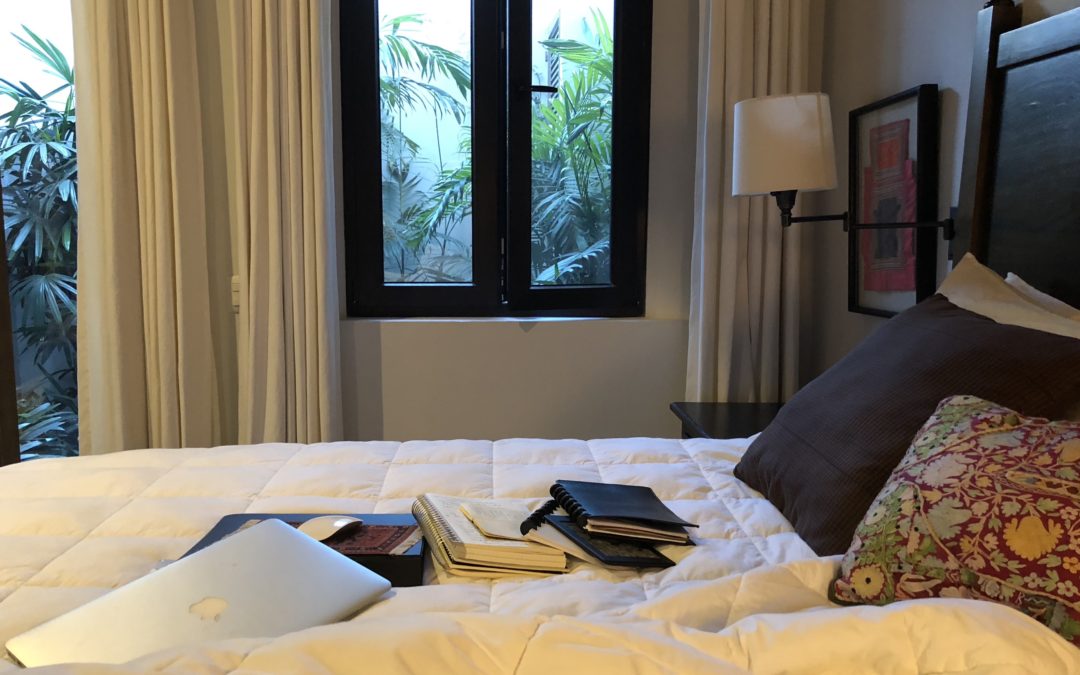
by Sandra Gulland | Mar 20, 2018 | Adventures of a Writing Life, Promotion, The Game of Hope, Work in Process (WIP) |
I’ve been bed-bound for over a week since a minor knee operation to repair a meniscus issue. I’m not going to whine about it! In fact, I’ve discovered that I’m the perfect candidate for this type of life.
On the bed beside me are:
- my Mac Air;
- my Levenger notebook (calendar etc.);
- a Circa notebook fat with my To Do lists;
- another notebook (a Semikolon Mucho Spiral Notebook for the stationery curious), where I’m thinking through The Next Novel;
- a three-ring binder for scene sheets (@ Story Genius), which I’m really using as a support for my mouse pad and mouse);
- my Kindle;
- an iPad;
- and a stack of magazines (The New Yorker, Real Simple, and Bookmarks).
Beside the bed is my walker (required for just a little longer!), a water bottle, clock, and iPhone. Moisturizer, lipstick, post-its, pencil, pen, pills. Snacks, tissue. Basic clutter.
Everything I need, in short, right where I can reach it. The only problem with this rat’s-nest life is that I can’t climb stairs (yet), can’t get up to my office.
But for now, I’m making great use of this time.
Website renovation
With every publication, a writer needs to update his/her website with information about the new book, a new media kit, author events, and a new author portrait throughout.
I didn’t have time to get an author portrait taken this year (I tried a selfie, with poor results), so I’ve used one James Brylowski took of me five years ago.
“Problem is, books are written slowly, and aging happens all of a sudden.” — from a wonderful article: The Agony and the Ecstasy of taking Author Photos.)
Having neglected my website for years, I discovered a number of problems. Fortunately, I was able to find a great website person through Fiverr.com who is helping me. We have quite a bit to do yet.
(Frankly, I don’t know how authors who publish a book a year manage.)
An important part of getting my website more reader-worthy was setting up my Media page. Following the directions of Tim Grahl (see below), I learned to code my Media page so that high-definition images would be automatically downloaded with just a click. I’m fairly stoked that I was able to do this.
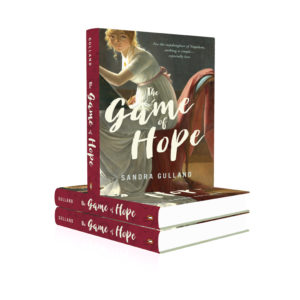
Also, on Fiverr.com, I found someone to turn the book cover of The Game of Hope into a 3D image (see above). For $5!
Easy Outreach with Tim Grahl
When it comes to marketing, I’m a fan of Tim Grahl, He’s experienced, down-to-earth and realistic. I’ve taken a few of his online courses, and they’ve always been worthwhile. Right now I’m following a new one he’s testing out, “Easy Outreach.” Basically, it’s about how to get interviewed on podcasts, but the detailed system he outlines would apply to any outreach: to blogs, vlogs, or podcasts, etc.
An important part of the process is to identify suitable podcasts and to study them before making a pitch. (I’ve discovered a number of wonderful podcasts in the process.) I’m kind of excited about putting this into practice. I ordered a USB Yeti mike, and already have one podcast interview scheduled for the fall.

I’m ready! Who knows where this might lead?
Finally learning Scrivener
I’ve promised myself that I would write The Next Novel on Scrivener. I’ve taken stabs at learning it before, but I’ve always ended up confused and frustrated. It’s a complex programme! I was on the verge of giving up when I came upon a Udemy Scrivener 3 course for Mac. It had excellent reviews so I went for it. It’s been fantastic. I have questions almost every day, and the teacher responds to every one. I take it bit by bit, and immediately apply what I’ve learned, so hopefully it will stick. I’m finally understanding why so many writers love it.
Additionally, I’ve been developing my next novel following the guidelines in Story Genius by Lisa Cron. Puzzling over how to get Cron’s scene card templates into my Scrivener project, I Googled “Story Genius Scrivener” and found a wonderful article by Gwen Hernandez on WriterUnboxed: Using Scrivener with Story Genius. Bingo! She even included a downloadable Scrivener template with scene card templates (and much more).
Watching movies, reading and listening to books and reading magazines …
And then, of course, there have been wonderful movies to watch: Three Billboards Outside Ebbing, Missouri; Call Me by Your Name; and, last night, Lady Bird. All were simply great. Of the three, I found Call Me by Your Name the most enchanting, swooningly European.
And then, of course, books, books, books! In addition to books on writing, I’m reading The Burning Girl by Claire Messud and listening, on Audible, to an amazing performance of The Hate U Give by Angie Thomas.
A hard life, eh?
SaveSave
SaveSave
SaveSave
SaveSave
SaveSave
SaveSave
SaveSave
SaveSave
SaveSave
SaveSave
SaveSave
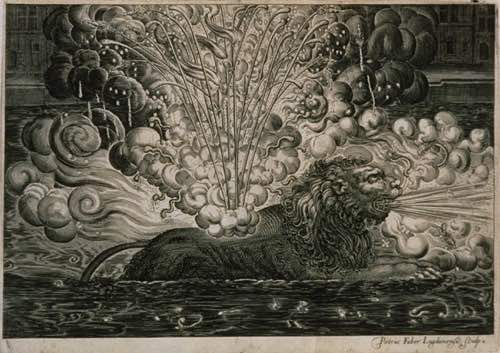
by Sandra Gulland | Jan 5, 2017 | Adventures of a Writing Life |
The image above is Fireworks for the Entry of Louis XIII and Anne of Austria: The Lion, in “Reception de Louis XIII,” Lyons, 1623.
Happy New 2017!
I like the feel of this year already. I’ve weaned myself — to some extent — from toxic international news and immersed myself in finishing the eighth draft of Moonsick, my YA novel about Josephine’s daughter Hortense. (Yikes! Due this month.)
The funny side of revision
This is what revision sometimes feels like … 
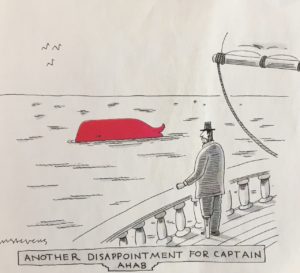
A New Yorker cartoon.
Newsletter coming
I’m also getting ready to send out a newsletter. Sign up here if you haven’t done so already. I will post links to it when it’s ready, but one advantage of signing up is that a subscriber wins one of my books with each newsletter.
A great audible edition of Middlemarch
When I’m not revising, or enjoying one of the many wonderful restaurants here in San Miguel de Allende with my husband, or puzzling over my latest watercolour, I’m listening to an absolutely outstanding audible edition of Middlemarch by George Eliot. This classic novel was destined to be forever on my Novels I’m Embarrassed to Admit I’ve Never Read List — in part because I just couldn’t cope with the pace and prose — but the narration by Juliet Stevenson really makes it come alive. Highly recommended!
Again, Happy New Year! You readers are the absolute best.

What audible recordings are your favourite? I’m always looking for recommendations.
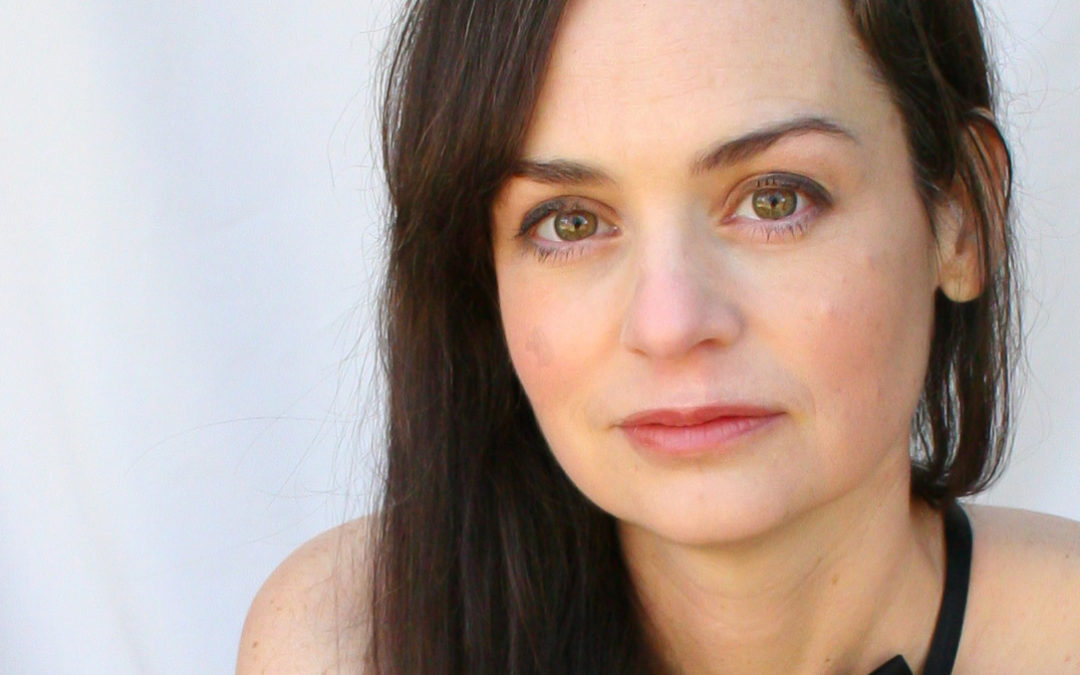
by Sandra Gulland | Mar 29, 2011 | Adventures of a Writing Life, Author Interviews, Recommended Books, Movies, Podcasts, etc. |
Julianna Baggott publishes an astonishing variety of things under an astonishing variety of names: novels, poetry, essays, blogs. It’s no accident that her website—Baggot • Asher • Bode —gives the impression of a group endeavor. Plus she has a very active family. I’ve been reading her absolutely charming blog for some time; it has become one of my favourites. The one thing you can count on from anything from Baggot, Asher or Bode is wit and heartfelt charm.
Today is the launch day of Julianna’s latest novel, The Province Cure for the Brokenhearted:
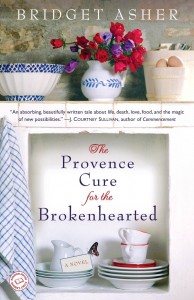
I ordered it on Kindle and it just this minute arrived on my iPad. I know from its perfect first sentence that I’m going to love it:
Here is one way to say it: Grief is a love story told backward.
Plus: it’s set in France. Need I say more?
Lest you remain unconvinced, here are a few advance reviews:
“Fans of Under the Tuscan Sun will adore this impossibly romantic read.”— People Magazine
“Readers who enjoy … Lolly Winston’s Good Grief and Jane Green’s The Beach House or travel-induced transformation books like Frances Mayes’s Under the Tuscan Sun and Elizabeth Gilbert’s Eat, Pray, Love will find common themes … and become quickly invested in the lives of the deftly drawn characters.”— Library Journal
“Unabashedly romantic … a real charmer about a Provencal house that casts spells over the lovelorn.” — Kirkus Reviews
So now for something about the author:
Julianna Baggott is the author of seventeen books [did you catch that? seventeen], most recently THE PROVENCE CURE FOR THE BROKENHEARTED under her pen name Bridget Asher, as well as THE PRETEND WIFE and MY HUSBAND’S SWEETHEARTS. She’s the bestselling author of GIRL TALK and, as N.E. Bode, THE ANYBODIES TRILOGY for younger readers.
Her essays have appeared widely in such publications as The New York Times Modern Love column, Washington Post, NPR.org, and Real Simple.
Her blog is a mix of writerly subjects, home life accounts (I particularly enjoy these) and author interviews. The author interviews are called “The 1/2 Dozen” because she gives authors a list of questions and asks them to pick 1/2 dozen to answer.
Julianne’s questions are delightfully quirky (as you will soon see), and so, for this launch day interview, I thought it appropriate to give her back her own list of questions.
And so:
A 1/2 Dozen for Julianna Baggott:
What’s your advice to someone who’s fallen in love with a writer?
If you’re charmed by neuroses, double down. If you see poverty as an adventure, go for it. A writer’s upsides tend to be: witty banter, imagination, insights, close observation. I would make sure you’re completely compelled to love this writer if the dark sides show up: biting snark, self-centric imagination, doomed global thinking, scrutiny. It helps if you both think you’re funny. It helps if the other brings out your best self.
What’s your advice to a writer who’s looking for a lifelong partner? Any particularly useful traits to suggest in said partner? (Do you want to tell us a brief love story here?)
Make sure they truly get obsession; preferably from the inside out. If you are their obsession, this might not work out so well, as you’ll be absent a lot and, when you return, you’ll be tired and thirsty and hungry. It’s better, I think, if you both show up at the end of a long day tired and thirsty and hungry, and ready to take turns leaning and boosting.
What kind of child were you, inside of what kind of childhood, and how did it shape you as a writer?
I was supposedly sickly, except that I wasn’t. I was just raised by a hypochondriac. I was really small and very underweight and wiry and tough, though I cried easily, that type. I was raised among older siblings and adults mostly, in a family that told a lot of stories. My parents took me to a lot of plays. I had a large vocabulary and oversized eyes and a very skinny neck. I hated the nickname Puppet. All of this applies to my work.
Some writers hate to write. Other writers love being engaged in the creative process. How would you describe your relationship with the page?
It’s a wild relationship. As volatile as it gets, I think we knew we’ll always get back together. Without it, I’d be heartbroken. I’m compulsive about the page, obsessive in my imaginative dwelling. I wouldn’t know what to do without writing. It’s the disease and the cure.
Criticism. It’s part of the territory. How do you handle it? Is this the way you’ve always handled it?
In early stages of a novel, I can’t hear much of it. If I look for the fault lines too early, they’ll be all I see. But then at 50 pages, I need someone to weigh in, imaginatively. Sometimes it’s a relief to hear, “Nope, not working. Pull up the stakes.” Then, after a first draft, I want as many critics as I can get — in the ideal range for the audience. I want it all. Heaps of it. After I’m finished and it’s been edited madly and it’s in book form, I’m not interested in hearing what I should have done differently. It’s like watching people drown and you can’t save them, and someone’s there, telling you that you could have avoided the lake altogether. Where were you then? I want to say. Too late, too late.
Are you bloggish?
I am bloggish. Sandra, here, has turned the tables and sicked my own questions on me. So, yes, I have writers and agents answer questions. I blog about my own weird, loud, rambunctious household. I blog about bookish things, pop-culture, and distinctly un-bookish things. It’s like the caverns of my pocketbook — be careful. You could find ANYthing in there and wander off lost… Here’s the dangerous link: http://bridgetasher.blogspot.com/
Thank you so much, Julianna! And to readers of this blog: Julianna’s warning is well heeded. It’s hard to dip into her world without wanting to stay for a very long time.
You can visit her blog at http://bridgetasher.blogspot.com/ and her website at www.juliannabaggott.com.
Have you read one of her books or her blog? Are you likewise addicted?

by Sandra Gulland | May 1, 2009 | Adventures of a Writing Life, Recommended Books, Movies, Podcasts, etc. |
Today was declared “Buy Indie Day” in support of independent bookstores—a wonderful excuse to spend more money on books. Today I bought at the wonderful Nicholas Hoare Bookstore on Front street in Toronto:
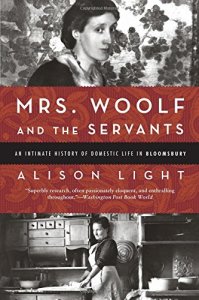
Mrs Woolf & the Servants, by Alison Light (about Virginia Woolf‘s relationship with her servants—delightful, and mildly research-related);
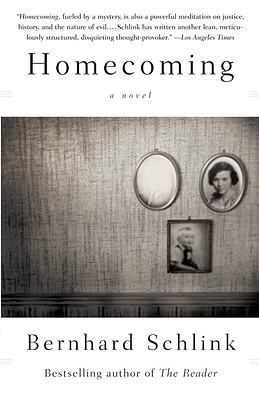 Homecoming, by the wonderful German writer Bernhard Schlink, author of The Reader (which I just read);
Homecoming, by the wonderful German writer Bernhard Schlink, author of The Reader (which I just read);
Grimoires: a History of Magic Books, by Owen Davies—research for The Next Novel.
I also ordered The Last Prince of the Mexican Empire by C.M. Mayo, who I’ve mentioned several times on this blog.
I’m also, now, the proud owner of a Toronto Public Library card, and brought home The Thirteenth Tale by Diane Setterfield,
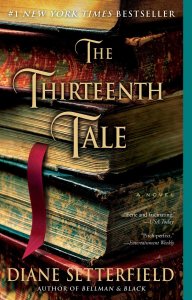 .
.
I’ve so many good books to read, I hardly know which way to turn.













 .
.